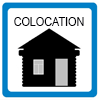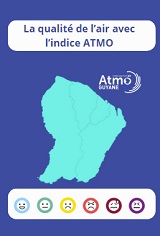Blada.com
vendredi 04 juillet
Boîtes aux lettres
Courrier des lecteurs
Petites annonces
Emploi / Formation
Covoiturage
Infos citoyennes
Infos citoyennes
11/04/23
La boucle semi-fermée, « un énorme poids en moins » pour les diabétiques de type 1
 Ce dispositif, remboursé depuis un an par la Sécurité sociale, calcule lui-même la quantité d’insuline à délivrer. Six premiers patients en bénéficient depuis la semaine dernière, après avoir été formés à son utilisation, en même temps que les professionnels du service de diabétologie de l’hôpital de Cayenne. Jeudi après-midi, ils ont testé son efficacité sur le sentier du Rorota, à Rémire-Montjoly.
Ce dispositif, remboursé depuis un an par la Sécurité sociale, calcule lui-même la quantité d’insuline à délivrer. Six premiers patients en bénéficient depuis la semaine dernière, après avoir été formés à son utilisation, en même temps que les professionnels du service de diabétologie de l’hôpital de Cayenne. Jeudi après-midi, ils ont testé son efficacité sur le sentier du Rorota, à Rémire-Montjoly.
 Fanny a été diagnostiquée diabétique de type 1 il y a vingt ans. Elle n’a pas pour autant renoncé à toute activité physique mais se souvient de débuts laborieux avec sa pompe à insuline : « Je faisais une injection avant de partir faire mon activité. Je regardais la courbe quand j’avais terminé. Si ce n’était pas bon, je mettais davantage d’insuline la fois suivante. Il fallait expérimenter pour trouver le bon dosage. »
Fanny a été diagnostiquée diabétique de type 1 il y a vingt ans. Elle n’a pas pour autant renoncé à toute activité physique mais se souvient de débuts laborieux avec sa pompe à insuline : « Je faisais une injection avant de partir faire mon activité. Je regardais la courbe quand j’avais terminé. Si ce n’était pas bon, je mettais davantage d’insuline la fois suivante. Il fallait expérimenter pour trouver le bon dosage. »
Ces tâtonnements ne seront un jour qu’un lointain souvenir pour toutes ces personnes. Depuis un an, la Sécurité sociale rembourse un nouveau dispositif. Il calcule automatiquement, toutes les cinq minutes, la quantité d’insuline à délivrer au patient. Les professionnels du service de diabétologie de l’hôpital de Cayenne et six patients y ont été formés la semaine dernière, par le Pr Freddy Penfornis (centre hospitalier sud-francilien à Corbeil-Essonne). Ils l’ont testé jeudi après-midi en conditions réelles, en s’élançant sur le sentier du Rorota, à Rémire-Montjoly.
Didier Dédé, président de l’Association des diabétiques de Guyane, connaît très bien les contraintes imposées aux patients qui veulent avoir une activité physique. Sportif aguerri, il a bouclé le marathon d’Ajaccio, il y a un an (lire la Lettre pro du 8 avril 2022). « La contrainte, c’était la pompe à insuline et de réussir à stabiliser son taux. Avec ce dispositif, on se décharge de beaucoup de choses. »
Tout n’est pas encore automatique. Jeudi midi, avant de passer à table, les patients ont dû rentrer dans la machine la quantité de glucides qu’ils allaient avaler. « Il faut ensuite indiquer l’heure à laquelle on débute l’activité physique et l’heure à laquelle on va terminer », poursuit Fanny. Pour le reste, le nouveau dispositif lui a été installé par son infirmière et un prestataire. « Ils m’ont expliqué comment cela fonctionne. On nous a montré comment ça marche pendant l’activité physique. Avant, c’était nous qui devions tout gérer. J’avais parfois du mal à calculer les glucides, alors ça sonnait. Il fallait vérifier si on avait fait une erreur, si ça venait de la pompe, si c’était le cathéter qui était bouché… On avait tendance à mettre beaucoup d’alarmes : si notre glycémie était trop haute, si elle était trop basse. Désormais, la machine ne va gérer que les alarmes indispensables. Une fois que tout sera réglé, ce sera un énorme poids en moins au quotidien.
« Reprendre une vie quasi normale »
Le Pr Freddy Penfornis, chef du service d’endocrinologie, diabétologie et maladie métaboliques du Centre Hospitalier sud-francilien à Corbeil-Essonne, est venu former les professionnels du Centre Hospitalier de Cayenne et les patients à l’utilisation de la boucle semi-fermée. Il en explique l’intérêt : « Depuis de nombreuses années, les patients sont équipés de la pompe à insuline, qui permet d’infuser de l’insuline en permanence, et d’un capteur qui mesure la glycémie en continue. La révolution, c’est un algorithme d’intelligence artificielle qui permet de recevoir la quantité d’insuline en fonction de la glycémie. Jusqu’à lundi dernier, il fallait que les patients règlent eux-mêmes leur pompe. Désormais, toutes les cinq minutes, la pompe peut modifier la quantité d’insuline qui est envoyée. Auparavant, il fallait notamment surveiller au moment des repas ou lors d’une activité physique. C’est la raison pour laquelle les diabétiques de type 1 renonçaient parfois à faire du sport. Ils avaient peur de ne pas gérer. Avec l’ancien système, certains patients sont très rigoureux, contrôlent leur glycémie sept, huit fois par jour, mettent leur réveil la nuit pour vérifier. Pour les parents dont un enfant a un diabète, le système permet de reprendre une vie quasi normale. »
 This device, reimbursed for a year by Social Security, calculates itself the quantity of insulin to be delivered. The first six patients have benefited from it since last week, after having been trained in its use, at the same time as professionals from the diabetology department of Cayenne hospital. Thursday afternoon, they tested its effectiveness on the Rorota trail, in Rémire-Montjoly.
This device, reimbursed for a year by Social Security, calculates itself the quantity of insulin to be delivered. The first six patients have benefited from it since last week, after having been trained in its use, at the same time as professionals from the diabetology department of Cayenne hospital. Thursday afternoon, they tested its effectiveness on the Rorota trail, in Rémire-Montjoly.
 Fanny was diagnosed with type 1 diabetes twenty years ago. She did not give up all physical activity, but remembers the difficult beginnings with her insulin pump: “I did an injection before leaving to do my activity. I looked at the curve when I was done. If it was not good, I put more insulin the next time. You had to experiment to find the right dosage.
Fanny was diagnosed with type 1 diabetes twenty years ago. She did not give up all physical activity, but remembers the difficult beginnings with her insulin pump: “I did an injection before leaving to do my activity. I looked at the curve when I was done. If it was not good, I put more insulin the next time. You had to experiment to find the right dosage.
This trial and error will one day be a distant memory for all these people. For the past year, Social Security has been reimbursing a new device. It automatically calculates, every five minutes, the amount of insulin to deliver to the patient. Professionals from the diabetology department at Cayenne hospital and six patients were trained there last week by Professor Freddy Penfornis (southern Ile-de-France hospital center in Corbeil-Essonne). They tested it Thursday afternoon in real conditions, setting off on the Rorota trail, in Rémire-Montjoly.
Didier Dédé, president of the Diabetic Association of Guyana, knows very well the constraints imposed on patients who want to be physically active. A seasoned athlete, he completed the Ajaccio marathon a year ago (read the Professional Letter of April 8, 2022). « The constraint was the insulin pump and succeed in stabilizing its rate. With this device, you get rid of a lot of things. »
Not everything is automatic yet. Thursday noon, before sitting down to eat, the patients had to enter the amount of carbohydrates they were going to swallow into the machine. “You must then indicate the time at which you start physical activity and the time at which you will end,” continues Fanny. For the rest, the new device was fitted to him by his nurse and a service provider. “They explained to me how it works. We were shown how it works during physical activity. Before, it was us who had to manage everything. I had trouble counting the carbs sometimes, so it sounded. We had to check if we had made a mistake, if it came from the pump, if it was the catheter that was clogged… We tended to set a lot of alarms: if our blood sugar was too high, if it was too low . From now on, the machine will only manage the essential alarms. Once everything is settled, it will be a huge less burden on a daily basis.
"Resuming an almost normal life"
Pr Freddy Penfornis, head of the endocrinology, diabetology and metabolic disease department of the South Francilien Hospital Center in Corbeil-Essonne, came to train the professionals of the Cayenne Hospital Center and the patients in the use of the loop semi-closed. He explains the benefit of it: “For many years, patients have been equipped with an insulin pump, which allows insulin to be continuously infused, and a sensor which measures blood glucose levels continuously. The revolution is an artificial intelligence algorithm that allows you to receive the amount of insulin based on blood sugar. Until last Monday, patients had to adjust their pump themselves. Now, every five minutes, the pump can change the amount of insulin that is delivered. Previously, it was necessary to monitor in particular at mealtimes or during physical activity. This is the reason why type 1 diabetics sometimes give up playing sports. They were afraid of not managing. With the old system, some patients are very rigorous, check their blood sugar seven, eight times a day, wake up at night to check. For parents who have a child with diabetes, the system allows them to return to a near-normal life.
Raccourcis


passer une petite annonce

passer une annonce de covoiturage


passer une annonce d’emploi







associations, postez vos actualités

participez au courrier des lecteurs
La Guyane c’est ici
La qualité de l’Air avec
ATMO
Photothèque

Lancements 2022
Vol 259 Ariane 5




